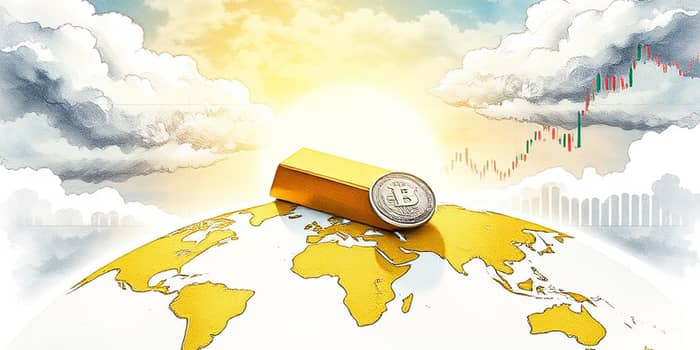
Throughout history, precious metals have held a unique position in the world of finance. Their enduring allure lies in intrinsic value, use as currency and the promise of protection when traditional markets falter. In an era marked by geopolitical tensions and volatile inflation, gold and silver stand out as time-tested stores of wealth, offering investors a refuge when uncertainty looms.
Gold and silver have been prized for millennia, serving as currency, jewelry and a repository of value. Their rarity and malleability endowed them with status as borderless currencies, immune to some monetary policy risks. Temples, empires and central banks alike have accumulated vaults of gold, seeking stability beyond the reach of paper money.
This deep-rooted trust has fueled modern demand. During the 2008 financial crisis and the COVID-19 pandemic, gold prices surged as investors sought refuge from collapsing equities. Silver, historically linked to gold but with significant industrial applications, also benefitted, highlighting the complementary roles of both metals in a diversified portfolio.
Recent data underscores the resilience of precious metals. By mid-2025, gold traded above $3,300 per ounce, hitting all-time highs amid elevated inflation readings and geopolitical unrest. Silver climbed by 25% year-over-year to around $37 per ounce, driven by robust industrial demand from solar panels, electric vehicles and high-tech manufacturing.
In practice, gold often moves inversely to risk assets. When equities dip or bond yields tumble, investors flock to bullion, pushing prices upward. Silver’s more pronounced volatility offers both higher upside potential and greater risk, making it attractive for those seeking growth exposure within a stable asset class.
Although both metals serve similar functions, they exhibit distinct characteristics. Investors often allocate 5–8% of their portfolio to gold for stability, while silver allocations range from 3% for conservative strategies to up to 10% for growth-focused investors.
No investment is without downside. Gold does not generate income, offering no dividends or interest returns. Its price can fluctuate with changes in real interest rates and U.S. dollar strength. Silver’s appeal in industry makes it more susceptible to cyclical manufacturing slowdowns and abrupt demand shifts.
Furthermore, silver markets are less liquid than gold’s enormous trading volumes, leaving room for price manipulation and sharp swings. Investors must weigh these risks against the potential rewards and consider their own time horizons and risk tolerance before committing significant capital.
Investors have multiple avenues to access precious metals:
Balancing these vehicles can enhance diversification. A blended strategy might use gold as the portfolio’s stability anchor and silver for potential growth, especially when industrial demand trends upward.
Central banks continue to hold gold as part of their foreign exchange reserves, reflecting its role as a cornerstone of national wealth preservation. Institutional investors and family offices similarly increase precious metal allocations during periods of heightened uncertainty, citing both historical precedence and current market dynamics.
Looking ahead, ongoing support for renewable energy and technological innovation promises sustained demand for silver. At the same time, persistent inflationary pressures and geopolitical tensions are likely to reinforce gold’s reputation as a timeless safe haven asset. For investors seeking resilience in turbulent markets, a considered allocation to these metals can serve as an invaluable portfolio stabilizer.
By understanding the unique attributes, risks and strategies associated with gold and silver, investors can make informed decisions that align with their financial goals. In uncertain times, these ancient metals continue to shine as beacons of security and opportunity.
References













